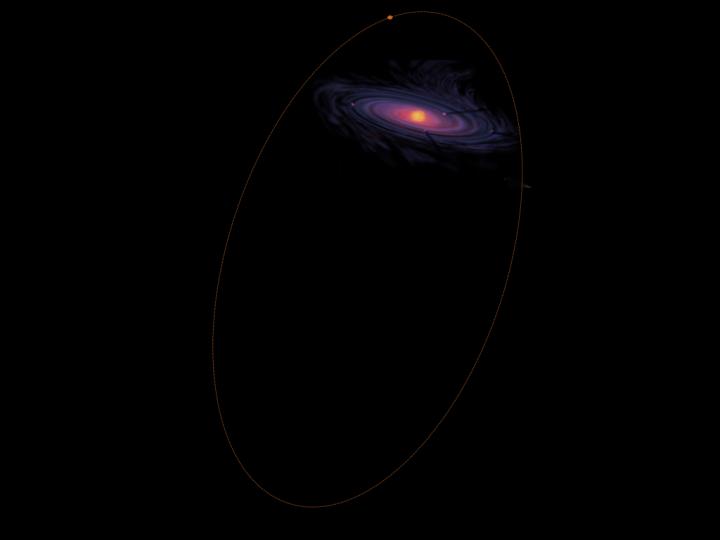Centaurs: they’ve been with us for a long time
We’ve been waiting for extraterrestrial visitors our whole lives – but in reality, they’re already here and have been with us for a long time. No, I don’t mean “Men in Black.” But it’s also not science fiction, it’s the truth. When astronomers discovered 2017 1I/ʻOumuamua, their surprise was enormous: we’d never seen an interstellar object inside our Solar System before. Or had we?
We had. For some time, astronomers have known about asteroids that don’t orbit the Sun in the same plane as the planets (the ecliptic), but instead on orbits that are at a greater or smaller angle to this plane. We know that the whole Solar System was made from a flat disk of dust and gas. Therefore, every object formed from that disk should also move within the plane of that flat disk. Unless, of course, some collision or gravitational interaction changed an object’s orbit at some point during the history of the Solar System.
However, it would also be possible that such objects didn’t come from the protoplanetary disk at all. If they had come to us from a different system before the Sun was born, they could’ve watched from their off-kilter perspective as the planets of the Solar System grew without being significantly influenced by their growth.
This can be proven, for example, by using simulations to trace the orbit of an object back into the past. If the influence of all the planets is included, the object would have to have moved within the ecliptic at some point in the past if it were not an “extraterrestrial.” However, if its orbit cannot be traced back to the protoplanetary disk, then we’ve got an alien on our hands, an interstellar object that could also be significantly older than the Sun.
Researchers ran simulations for a total of 20 objects with very eccentric orbits with inclinations greater than 60 degrees, most of them so-called Centaurs (asteroids or comets that orbit the Sun between Jupiter and Neptune). The results were clear: 4.5 billion years ago, all these objects were likely already on orbits around the future Solar System similar to their orbits today – so they must be interstellar visitors that were already present at our birth. Therefore, sending a spacecraft to explore such an object could give us information on conditions in other solar systems without having to wait for the next short visit from an interstellar traveler.
